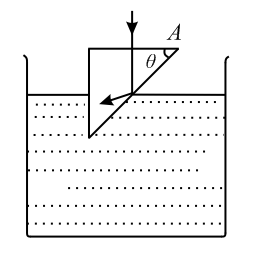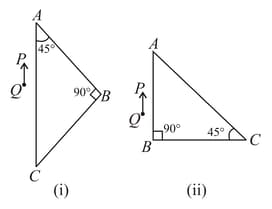Figure shows a mixture of blue-green and red coloured rays, incident normally on a right-angled prism. The critical angles of the materials of the prism for red, green and blue are , and Respectively. The arrangement will separate-


Important Questions on Refraction, Dispersion and Lens
Three rays of light, namely red , green and blue are incident on the face of a right angled prism as shown in figure.
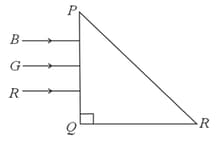
The refractive indices of the material of the prism for red, green and blue wavelength are and respectively. The colour of the ray(s) emerging out of the face is :
Show, with the help of ray diagrams, how an image is produced in a totally-reflecting prism.
Show, by ray-diagram, how a totally reflecting glass prism can be used to deviate a ray through .
A light ray is incident perpendicularly to one face of a Prism and is totally internally reflected at the glass-air interface. If the angle of reflection is , we conclude that the refractive index .
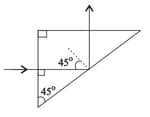
Draw ray diagram to deviate a ray of light by , and inversion without deviation. Name the phenomenon used and write its conditions.
A ray falls on a prism and travels as shown in figure. The minimum refractive index of the prism material should be

A beam of light consisting of red, green and blue colours is incident on a right-angled prism. The refractive index of the material of a prism for red, green and blue wavelengths are , and Respectively. The prism will____
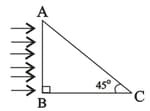
Two parallel light rays are incident at one surface of a prism as shown in the figure. The prism is made of glass of refractive index . The angle between the rays as they emerge is nearly.

I. In a periscope, prisms are used to turn the incoming light through .
II. In a periscope, plane mirrors can also be used instead of prisms.
III. The loss of intensity of light is more in the case of reflections by a mirror. Which of the statements given above are correct?
The refractive index of the material of an equilateral prism is . What is the angle of minimum deviation .
Show, by a ray-diagram, how a totally reflecting glass prism can be used to deviate a ray through .
In the given figure, the principal section of a glass prism is an isosceles triangle with . The face is silvered. A ray incident normally on face after two reflections emerges from the base in a direction perpendicular to it. What is the angle of a prism?
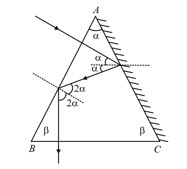
The refractive index of the material of the prism and liquid are and , respectively. What will be the value of for the following refraction?
